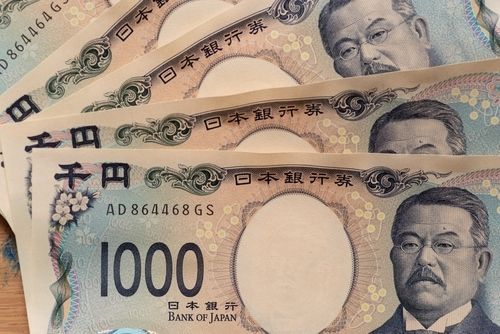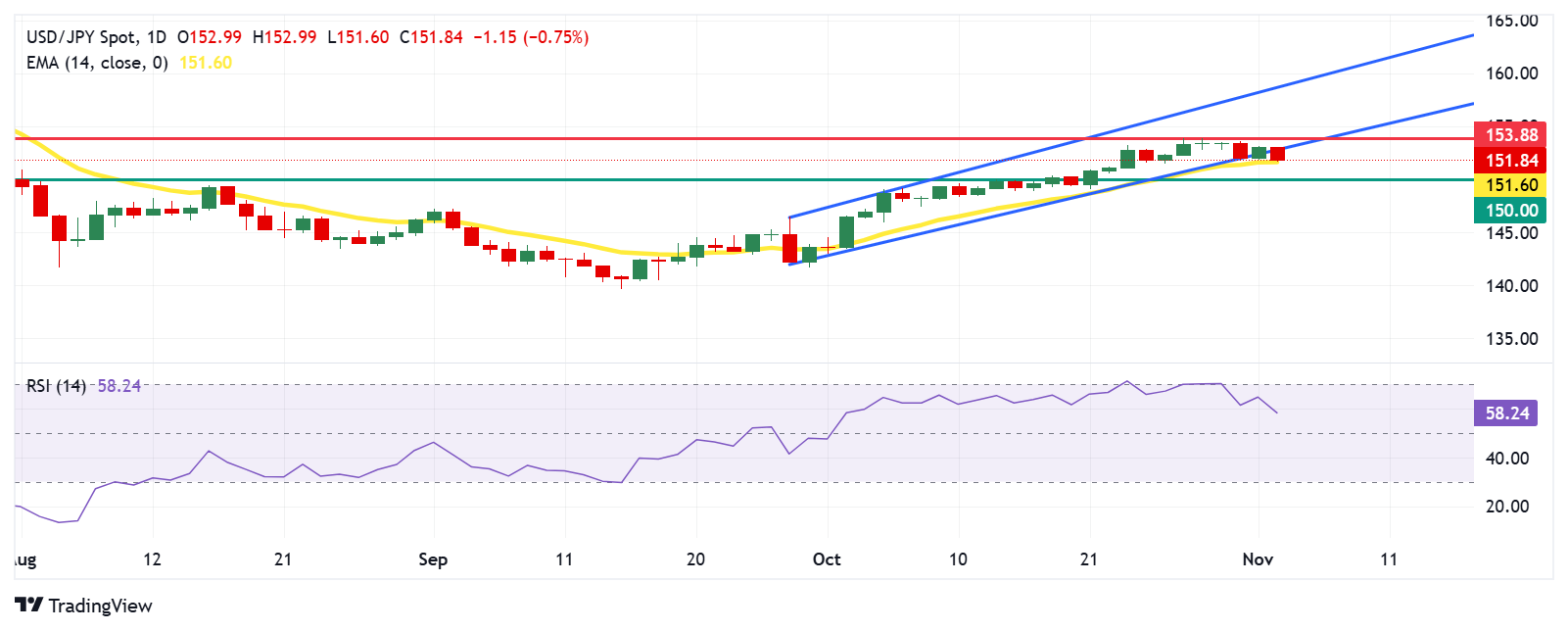Japanese Yen appreciates despite limited liquidity, eyes on US presidential election

The Japanese Yen rises as the US Dollar depreciates ahead of the US election results on Tuesday.
JPY liquidity is expected to be limited as the Japanese markets are closed for Sports Day on Monday.
The US Dollar depreciated due to the release of weaker Nonfarm Payrolls ahead of the Fed decision later this week.
The Japanese Yen (JPY) gains ground on Monday as the US Dollar (USD) declines, possibly driven by rising uncertainty surrounding Tuesday's US presidential election. However, JPY liquidity is somewhat limited due to the closure of Japanese markets for Sports Day, which prevents physical trading of US Treasuries.
The JPY may weaken in the future as political and monetary policy uncertainties grow following last week’s parliamentary majority win by the Liberal Democratic Party (LDP) coalition, which has created confusion regarding the Bank of Japan’s (BOJ) policy direction.
However, BoJ Governor Kazuo Ueda noted in the post-meeting briefing last Thursday that economic risks in the US seem to be decreasing, indicating that this could pave the way for a potential rate hike. Meanwhile, the Bank of Japan decided to maintain its policy rate at 0.25%, a move that was widely expected.
The weaker-than-expected Nonfarm Payrolls (NFP) data for October might have contributed to the decline of the US Dollar ahead of the Federal Reserve's (Fed) interest rate decision later this week. According to the CME FedWatch Tool, there is a 99.6% probability that the Fed will implement a quarter-point rate cut in November.
Daily Digest Market Movers: Japanese Yen rises as US Dollar depreciates ahead of US election
The latest poll shows Vice President Kamala Harris with slight leads in Nevada, North Carolina, and Wisconsin, while former President Donald Trump holds a narrow edge in Arizona. The candidates are in close contests in Michigan, Georgia, and Pennsylvania. Conducted from October 24 to November 2, the final New York Times/Siena College poll indicated that all matchups in seven battleground states fall within a 3.5% margin of error.
US Nonfarm Payrolls rose by 12,000 in October, following a revised September gain of 223,000 (down from 254,000), which fell well short of market expectations of 113,000. Meanwhile, the Unemployment Rate remained steady at 4.1% in October, matching the consensus forecast.
Japan's Chief Cabinet Secretary Yoshimasa Hayashi stated on Friday that he anticipates the Bank of Japan will collaborate closely with the government to implement appropriate monetary policy aimed at achieving its price target in a sustainable and stable manner.
The headline au Jibun Bank Japan Manufacturing PMI stood at 49.2 in October, indicating a decline from 49.7 in September. This composite single-figure indicator shows that Japanese manufacturing production continued to decline at the beginning of the fourth quarter of 2024, with both output and new order inflows decreasing at more pronounced rates.
The US Personal Consumption Expenditures (PCE) Price Index showed that core inflation increased by 2.7% year-over-year in September. Additionally, Initial Jobless Claims dropped to a five-month low of 216,000 for the week ending October 25, signaling a robust labor market and lessening expectations for imminent rate cuts by the Federal Reserve (Fed).
The Bank of Japan decided to keep its short-term interest rate target at 0.25% following the conclusion of its two-day monetary policy review on Thursday. This decision was in line with market expectations for maintaining stability.
According to the BoJ Outlook Report for Q3, the central bank plans to continue raising policy rates as long as the economy and prices align with its forecasts, particularly given that real interest rates are currently very low. The Bank of Japan aims to conduct monetary policy with a focus on sustainably and stably achieving its 2% inflation target.
US Gross Domestic Product (GDP) annualized expanded by 2.8% in Q3, below 3.0% in Q2 and forecasts of 3.0%. The ADP Employment Change report showed that 233,000 new workers were added in October, marking the largest increase since July 2023. This followed an upward revision to 159,000 in September and significantly exceeded forecasts of 115,000.
Technical Analysis: USD/JPY trades below 152.00, lower boundary of the ascending channel
The USD/JPY pair trades around 151.80 on Monday. Daily chart analysis suggests a potential weakening of the bullish bias, as the pair has broken below its ascending channel. However, the 14-day Relative Strength Index (RSI) remains above 50, indicating that bullish momentum is still present.
In terms of resistance, the USD/JPY pair faces a hurdle at the lower boundary of the ascending channel, located at the 152.90 level. If the pair manages to re-enter this channel, it could aim for the recent high at 153.88 level before the upper channel boundary near 158.90.
On the downside, the 14-day Exponential Moving Average (EMA) at the 151.60 level serves as immediate support for the USD/JPY pair, with additional support found around the psychological level of 150.00.
USD/JPY: Daily Chart
* The content presented above, whether from a third party or not, is considered as general advice only. This article should not be construed as containing investment advice, investment recommendations, an offer of or solicitation for any transactions in financial instruments.




